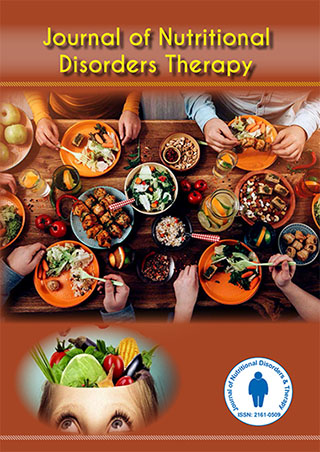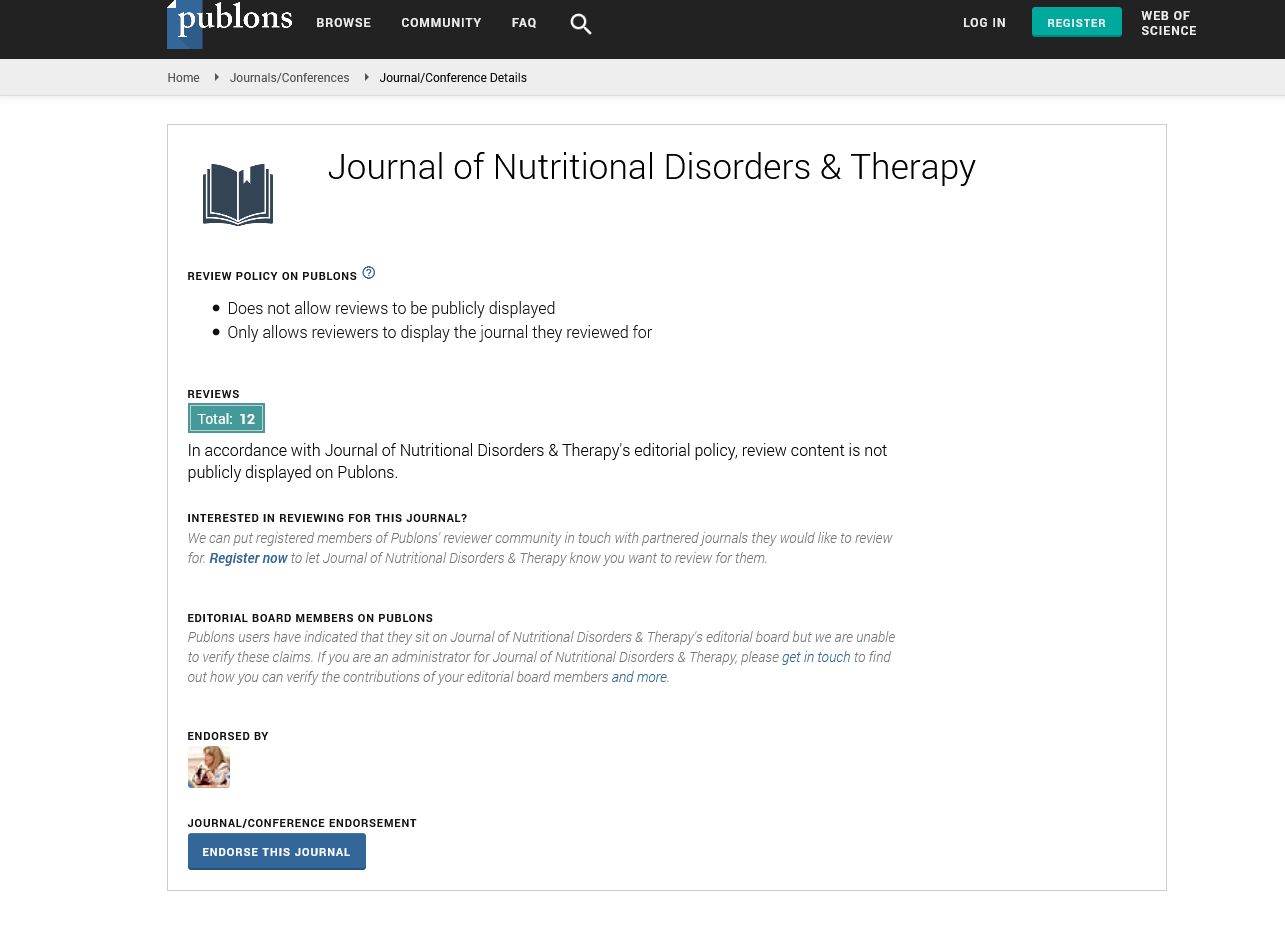Indexed In
- Open J Gate
- Genamics JournalSeek
- Academic Keys
- JournalTOCs
- Ulrich's Periodicals Directory
- RefSeek
- Hamdard University
- EBSCO A-Z
- OCLC- WorldCat
- Publons
- Geneva Foundation for Medical Education and Research
- Euro Pub
Useful Links
Share This Page
Journal Flyer

Open Access Journals
- Agri and Aquaculture
- Biochemistry
- Bioinformatics & Systems Biology
- Business & Management
- Chemistry
- Clinical Sciences
- Engineering
- Food & Nutrition
- General Science
- Genetics & Molecular Biology
- Immunology & Microbiology
- Medical Sciences
- Neuroscience & Psychology
- Nursing & Health Care
- Pharmaceutical Sciences
Perspective - (2025) Volume 15, Issue 1
Body Weight and Viral Illness Outcomes in Children
Eduardo Valdes*Received: 25-Feb-2025, Manuscript No. JNDT-25-29113 ; Editor assigned: 27-Feb-2025, Pre QC No. JNDT-25-29113 (PQ); Reviewed: 13-Mar-2025, QC No. JNDT-25-29113 ; Revised: 20-Mar-2025, Manuscript No. JNDT-25-29113 (R); Published: 27-Mar-2025, DOI: 10.35248/2161-0509.25.15.317
Description
Childhood overnutrition, characterized by excessive body fat accumulation, has become a major global health concern. It is associated with a wide range of medical complications, including metabolic, cardiovascular and orthopedic conditions. Less frequently discussed, but increasingly observed, is the role of overnutrition in infectious diseases — especially respiratory tract infections.
Respiratory viruses such as Respiratory Syncytial Virus (RSV), influenza, adenovirus, and rhinovirus frequently cause hospitalization in children. Several known factors influence disease progression, including immune status, age and underlying comorbidities. Recent studies have begun to explore how excess weight may alter immune function and respiratory mechanics, potentially contributing to increased severity of illness.
Possible mechanisms
Altered immune response: Excess adipose tissue contributes to chronic low-grade inflammation and impairs innate and adaptive immunity. Macrophage activation, altered cytokine production and reduced lymphocyte function have all been described in obese individuals. These changes may compromise the body’s ability to control viral replication and resolve inflammation.
Mechanical and structural factors: Overnutrition can reduce lung compliance and increase airway resistance, limiting effective ventilation. Diaphragmatic movement may also be restricted due to abdominal fat accumulation. These factors are particularly relevant during respiratory infections, where increased demand for oxygen and efficient ventilation is critical.
Metabolic dysregulation: Children with obesity are more likely to have insulin resistance, which may interfere with immune signaling pathways. Inflammation in adipose tissue may also create an environment that favors prolonged illness or secondary infections.
Delayed clinical recognition: Respiratory distress in overweight children may be underrecognized or misinterpreted, possibly delaying initiation of therapy. Additionally, standard oxygen saturation readings may be less reliable in children with altered chest wall mechanics.
Public health implications
This study highlights the importance of recognizing overnutrition as a potential risk factor for complications in pediatric respiratory infections. Early identification may allow for closer monitoring and earlier intervention in overnourished children presenting with respiratory symptoms, tailored discharge planning and follow-up care to prevent readmission, consideration of weight management in long-term pediatric health strategies.
From a public health perspective, these findings reinforce the need to address childhood overnutrition not only for its chronic disease implications but also for its effect on infectious disease severity.
Limitations
While informative, this study has certain limitations such as its retrospective nature limits causality, it was conducted in a single tertiary hospital, which may not reflect broader community settings, viral subtypes were not always subtyped and limiting detailed analysis of strain-specific effects, nutritional assessments were based on BMI alone, which does not capture body composition nuances.
Further prospective studies are needed to validate these findings and examine the role of interventions in modifying risk.
Overnutrition appears to be associated with a higher risk of serious outcomes in children hospitalized with respiratory viral infections. Increased oxygen need, longer hospital stays and more frequent intensive care admissions were observed in children with excess body weight. These results underline the importance of incorporating nutritional status into risk assessments for respiratory illness in children. A multidisciplinary approach, integrating pediatric care, nutrition and infectious disease management, is essential for reducing the health burden posed by the intersection of overnutrition and viral infections in the pediatric population.
Citation: Valdes E (2025). Body Weight and Viral Illness Outcomes in Children. J Nutr Disord Ther. 15:317.
Copyright: © 2025 Valdes E. This is an open-access article distributed under the terms of the Creative Commons Attribution License, which permits unrestricted use, distribution, and reproduction in any medium, provided the original author and source are credited.

